 1996 Peugeot 106 II (1) Dimensions, Size & Specs
1996 Peugeot 106 II (1) Dimensions, Size & SpecsMeasurements of the 1996 Peugeot 106 II, engineered for optimal performance and comfort
| Dimensions | |
|---|---|
| Length: | 3680 mm144.9 in12.1 ft |
| Width: | 1590-1610 mm62.6-63.4 in5.2-5.3 ft |
| Height: | 1357-1380 mm53.4-54.3 in4.5-4.5 ft |
| Trunk Capacity: | 215 liter7.6 cu ft |
| Trunk Capacity (Max): | 530-953 liter18.7-33.7 cu ft |
| Weight Specifications | |
| Curb Weight: | 795-950 kg1753-2094 lbs |
| Maximal permitted Weight: | 1215-1405 kg2679-3097 lbs |
| Tire Specifications | |
| Rims Size: |
|
| Tire Sizes: |
|
The Peugeot 106 II (1), produced between 1996 and 2003, is a compact hatchback that stands out for its practical size and efficient use of space, making it an excellent choice for city driving and small families. The car’s length ranges between 3678 and 3680 mm (144.7 to 144.9 inches), and it has a width between 1590 and 1610 mm (62.6 to 63.4 inches). Its height varies from 1357 to 1380 mm (53.4 to 54.3 inches), giving it a balanced profile that combines compactness with a comfortable interior space. The curb weight of the 106 II ranges from 795 to 950 kg (1,753 to 2,094 lbs), contributing to its nimble handling and fuel efficiency. The maximum permissible weight ranges from 1215 to 1405 kg (2,678 to 3,097 lbs). One of the notable features of the Peugeot 106 II is its luggage capacity, which offers 215 liters (7.6 cubic feet) of space with the rear seats up, expandable to between 530 and 953 liters (18.7 to 33.7 cubic feet) when the rear seats are folded down, providing versatility for transporting larger items. This generation typically rides on 13-inch rims, compatible with tire sizes including 145/70 R13, 155/70 R13, 165/70 R13, 175/60 R14, and 185/55 R14, which balance comfort and road handling. Overall, the Peugeot 106 II serves as a practical, small-sized hatchback with dimensions and features well-suited for urban environments, and it remains a reference point for car size comparisons in the compact hatchback category.
Discover the standout features that make the 1996 Peugeot 106 II a leader in its class
Have a question? Please check our knowledgebase first.
The Peugeot 106 II (1), produced between 1996 and 2003, features a compact hatchback design ideal for urban environments. Its length ranges between 3678 mm and 3680 mm (approximately 144.7 to 144.9 inches). The width varies from 1590 mm to 1610 mm (about 62.6 to 63.4 inches), and the height is between 1357 mm and 1380 mm (53.4 to 54.3 inches). These dimensions contribute to the car's nimble handling and ease of parking, making it a practical choice for tight city spaces without sacrificing interior space.
The curb weight of the Peugeot 106 II (1) falls between 795 kg and 950 kg (approximately 1754 to 2094 pounds), depending on the specific model and equipment. This lightweight design contributes to its fuel efficiency and agility. The maximum permissible weight ranges from 1215 kg to 1405 kg (about 2679 to 3097 pounds), which includes the vehicle's own weight plus passengers and cargo. These values highlight the car's efficient use of materials to balance performance with economy.
The Peugeot 106 II (1) offers a practical luggage capacity for a small hatchback. With the rear seats in place, the luggage capacity is 215 liters (approximately 7.6 cubic feet), which is sufficient for everyday groceries or a couple of small suitcases. When the rear seats are folded down, the capacity expands significantly to between 530 liters and 953 liters (roughly 18.7 to 33.7 cubic feet), offering flexible cargo space for larger items or increased storage needs, making the vehicle versatile for various lifestyle demands.
The Peugeot 106 II (1) supports a variety of rim and tire sizes to balance comfort, handling, and performance. The rim size standard is 13 inches. Corresponding tire sizes include 145/70 R13, 155/70 R13, 165/70 R13, 175/60 R14, and 185/55 R14. These sizes offer options for drivers seeking different driving experiences, from economical daily commuting with narrower tires to sportier handling with wider profiles. Selecting the correct tire size ensures optimal vehicle safety and performance.
Yes, the Peugeot 106 II (1) is well-suited to fit into a standard residential garage due to its compact dimensions. With a length just shy of 3.68 meters (around 12 feet), a width up to 1.61 meters (approximately 5.3 feet), and a height under 1.38 meters (about 4.5 feet), the vehicle requires considerably less space than larger cars. This makes parking inside typical single-car garages straightforward, with sufficient room to open doors and maneuver comfortably, catering well to urban and suburban homeowners.
Compared to the first-generation Peugeot 106, the 106 II (1) maintained a similar compact footprint but featured subtle updates to dimensions for improved interior space and comfort. While length remained nearly the same at about 3.68 meters, the width of the 106 II (1) was slightly increased up to 1.61 meters, providing a slightly roomier cabin experience. Height was also adjusted marginally to enhance headroom and aerodynamics. These changes improved the overall practicality without sacrificing the agile nature loved by previous generation drivers.
The Peugeot 106 II (1) fits comfortably within the supermini or subcompact hatchback segment typical of the late 1990s and early 2000s. Its length of approximately 3.68 meters (12 feet) and width near 1.6 meters (5.25 feet) are comparable to competitors like the Ford Fiesta, Renault Clio, and Volkswagen Polo of the era. While some rivals may offer slightly larger interiors or more modern styling, the 106’s compact size combined with good handling made it competitive, especially for buyers seeking an economical and maneuverable city car.
The Peugeot 106 II (1) has a height ranging from 1357 mm to 1380 mm (about 53.4 to 54.3 inches). This relatively low height contributes to the vehicle’s aerodynamic profile, helping with fuel efficiency and stability at higher speeds. Internally, it provides adequate headroom for front and rear passengers for a car in the supermini segment, though taller individuals might find rear seat headroom slightly constrained. The hatchback design compensates by optimizing overall interior space utilization, balancing compact external dimensions with occupant comfort.
The curb weight range of 795 kg to 950 kg (1754 to 2094 pounds) for the Peugeot 106 II (1) places it among lightweight vehicles in its class. A lighter vehicle typically enjoys improved fuel economy and more responsive handling, both key advantages in urban and suburban driving conditions. This weight also means that smaller engines can provide sufficient power without excessive fuel consumption. Additionally, a lighter curb weight contributes to less wear on tires and brakes, reducing maintenance costs and overall running expenses.
Designed as a small hatchback, the Peugeot 106 II (1) excels in congested city settings with its compact size and maneuverability. Its exterior dimensions allow easy navigation through narrow streets and limited parking spaces. Inside, the flexible luggage capacity—with 215 liters (7.6 cubic feet) standard and up to 953 liters (33.7 cubic feet) with seats folded—enables accommodating various cargo sizes, from daily shopping to larger goods. Its light curb weight aids in agility, making it a practical, efficient city car that doesn’t compromise on utility.
Discover similar sized cars.
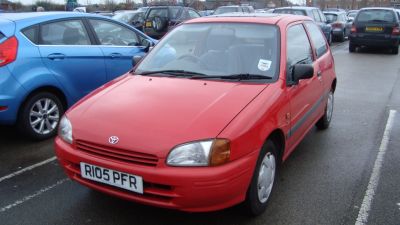
| Production: | 1996-1999 |
|---|---|
| Model Year: | 1996 |
| Length: | 3740 mm147.2 in |
| Width: | 1635 mm64.4 in |
| Height: | 1400 mm55.1 in |
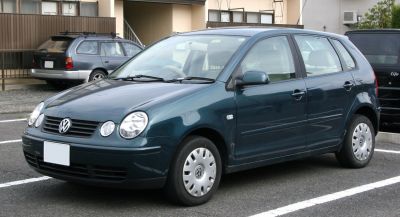
| Production: | 2001-2005 |
|---|---|
| Model Year: | 2001 |
| Length: | 3743-3897 mm147.4-153.4 in |
| Width: | 1632-1650 mm64.3-65.0 in |
| Height: | 1418-1465 mm55.8-57.7 in |
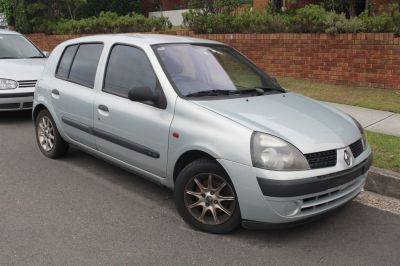
| Production: | 2001-2003 |
|---|---|
| Model Year: | 2001 |
| Length: | 3773 mm148.5 in |
| Width: | 1940 mm76.4 in |
| Height: | 1417 mm55.8 in |

| Production: | 1998-2001 |
|---|---|
| Model Year: | 1998 |
| Length: | 3773 mm148.5 in |
| Width: | 1940 mm76.4 in |
| Height: | 1409-1417 mm55.5-55.8 in |
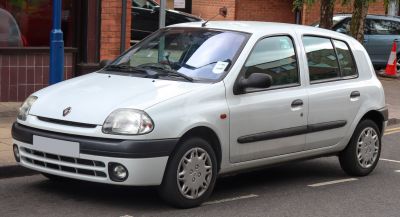
| Production: | 1998-2001 |
|---|---|
| Model Year: | 1998 |
| Length: | 3773 mm148.5 in |
| Width: | 1940 mm76.4 in |
| Height: | 1417 mm55.8 in |
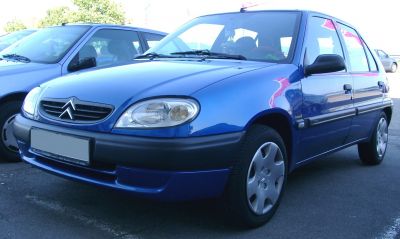
| Production: | 1999-2002 |
|---|---|
| Model Year: | 2000 |
| Length: | 3718 mm146.4 in |
| Width: | 1595 mm62.8 in |
| Height: | 1368 mm53.9 in |
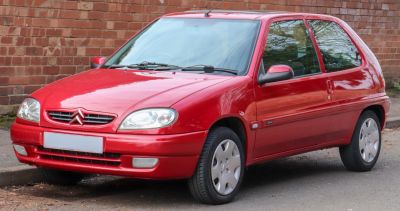
| Production: | 1999-2003 |
|---|---|
| Model Year: | 2000 |
| Length: | 3718 mm146.4 in |
| Width: | 1595-1620 mm62.8-63.8 in |
| Height: | 1360-1370 mm53.5-53.9 in |
